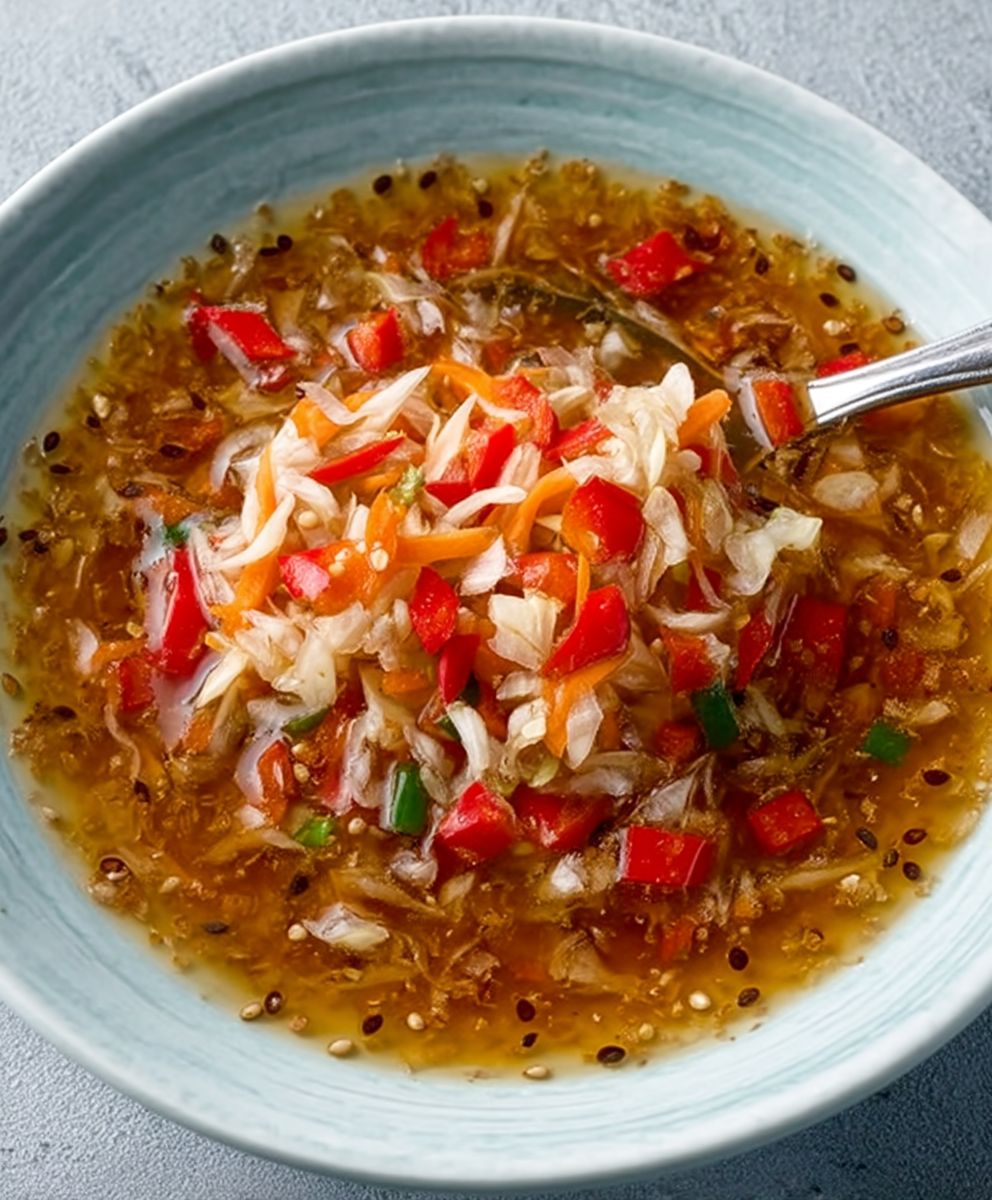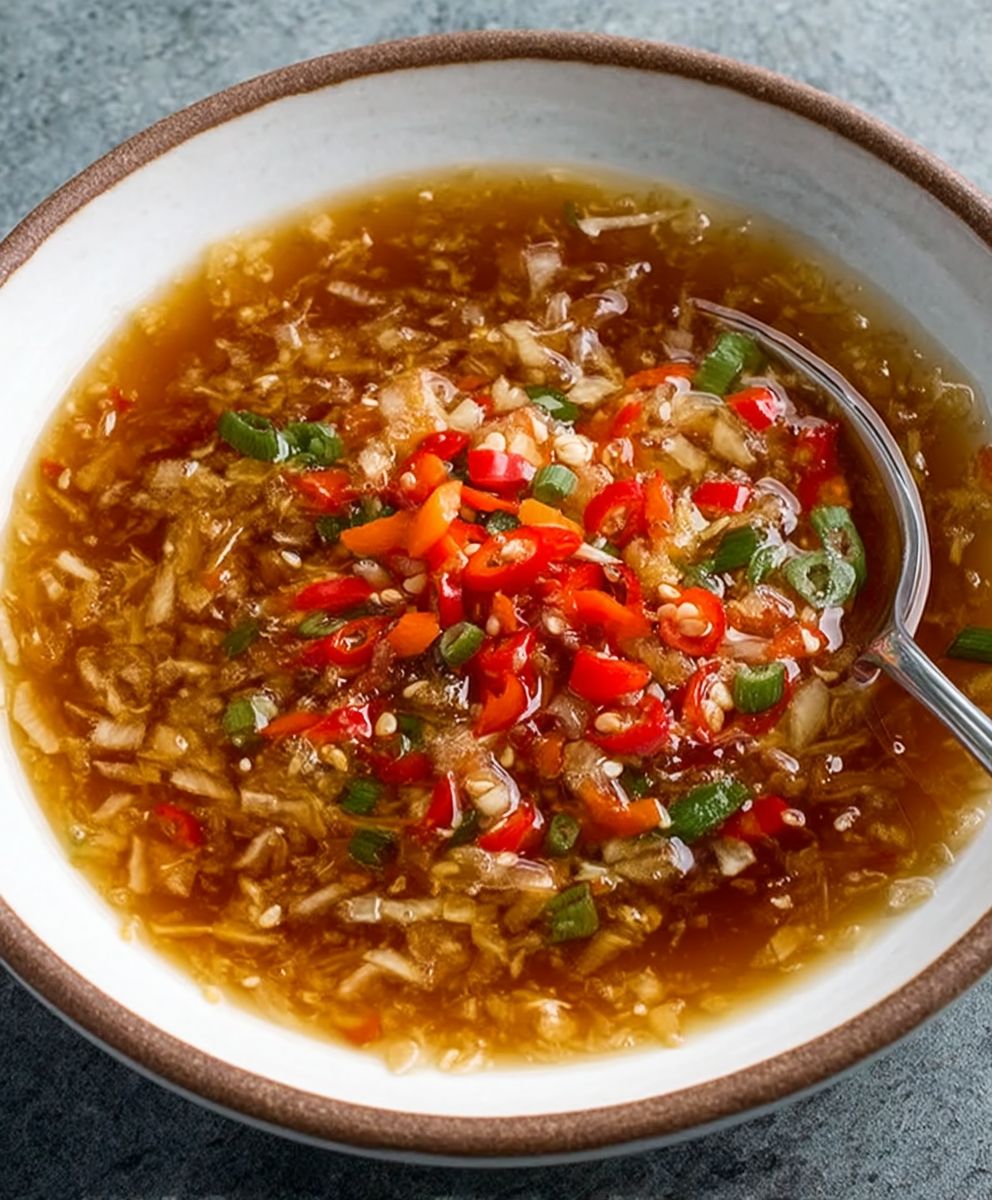Hot Thai Dressing: Prepare to ignite your taste buds with a vibrant explosion of flavor! Imagine drizzling a tantalizing sauce over your favorite salad, grilled chicken, or even a simple bowl of noodles, instantly transforming it into a culinary masterpiece. This isn’t just any dressing; it’s a symphony of sweet, sour, spicy, and savory notes that dance harmoniously on your palate.
Thai cuisine is renowned for its intricate balance of flavors, and this dressing perfectly embodies that philosophy. While the exact origins are difficult to pinpoint, the use of chilies, lime, fish sauce, and sugar in Thai cooking dates back centuries, reflecting the country’s rich agricultural heritage and cultural influences. It’s a testament to the ingenuity of Thai cooks who have mastered the art of creating complex and satisfying dishes from simple ingredients.
What makes Hot Thai Dressing so irresistible? It’s the perfect marriage of heat and refreshment. The chilies provide a pleasant kick, while the lime juice adds a zesty tang that brightens up any dish. The subtle sweetness from the sugar balances the savory notes of the fish sauce, creating a truly addictive flavor profile. People love it because it’s incredibly versatile, easy to make, and adds a touch of exotic flair to everyday meals. Plus, it’s a fantastic way to add a healthy dose of flavor without relying on heavy, processed ingredients. Get ready to experience a taste sensation that will leave you craving more!
Ingredients:
- 1/2 cup rice vinegar
- 1/4 cup fish sauce (nam pla)
- 1/4 cup lime juice, freshly squeezed
- 2 tablespoons soy sauce (low sodium recommended)
- 2 tablespoons brown sugar, packed
- 1-2 tablespoons chili garlic sauce (adjust to your spice preference)
- 1 tablespoon grated ginger, fresh
- 2 cloves garlic, minced
- 1 tablespoon sesame oil
- 1/4 cup vegetable oil or canola oil
- 2 tablespoons chopped cilantro, fresh
- 1 tablespoon chopped green onions, fresh
- 1/2 teaspoon red pepper flakes (optional, for extra heat)
Preparing the Dressing:
- Combine the Base Ingredients: In a medium-sized bowl, whisk together the rice vinegar, fish sauce, lime juice, and soy sauce. Make sure you use a bowl large enough to accommodate all the ingredients and allow for easy whisking. The rice vinegar provides a tangy base, the fish sauce adds umami and saltiness, the lime juice contributes brightness and acidity, and the soy sauce balances the flavors with its savory notes.
- Dissolve the Sugar: Add the brown sugar to the bowl. Whisk vigorously until the brown sugar is completely dissolved. This is crucial for a smooth and well-balanced dressing. If the sugar doesn’t dissolve properly, the dressing can be grainy. You can also gently warm the mixture in the microwave for 10-15 seconds to help the sugar dissolve more easily, but be careful not to overheat it.
- Add the Aromatics: Stir in the chili garlic sauce, grated ginger, and minced garlic. The chili garlic sauce provides the signature spicy kick and garlicky flavor of Thai cuisine. Adjust the amount to your liking, starting with 1 tablespoon and adding more if you prefer a spicier dressing. Freshly grated ginger adds a warm and slightly spicy note, while minced garlic contributes a pungent and savory element. Make sure the ginger is finely grated to avoid large chunks in the dressing.
- Emulsify the Oils: Gradually whisk in the sesame oil and vegetable oil (or canola oil). The key here is to add the oils slowly while continuously whisking to create an emulsion. This will help the dressing thicken and prevent the oil from separating. The sesame oil adds a nutty and aromatic flavor, while the vegetable oil provides a neutral base and helps to bind the ingredients together. If you want a richer flavor, you can use all sesame oil, but be aware that it can be quite strong.
- Incorporate the Fresh Herbs: Stir in the chopped cilantro and green onions. These fresh herbs add a vibrant color and a refreshing flavor to the dressing. Make sure the herbs are finely chopped to ensure they are evenly distributed throughout the dressing. If you don’t have cilantro or green onions on hand, you can substitute with other fresh herbs like mint or basil, but the flavor will be slightly different.
- Adjust the Spice Level (Optional): If you want to add extra heat, stir in the red pepper flakes. Start with 1/2 teaspoon and add more to taste. Be careful not to add too much, as the dressing can become very spicy quickly. You can also use other types of chili peppers, such as Thai chilies, for a more authentic flavor.
- Taste and Adjust Seasoning: Taste the dressing and adjust the seasoning as needed. You may need to add more lime juice for acidity, fish sauce for saltiness, brown sugar for sweetness, or chili garlic sauce for spice. The goal is to achieve a balance of sweet, sour, salty, and spicy flavors. Don’t be afraid to experiment and adjust the ingredients to your personal preferences.
Storing the Dressing:
- Transfer to a Jar or Container: Pour the dressing into a clean jar or airtight container. This will help to keep the dressing fresh and prevent it from absorbing odors from the refrigerator.
- Refrigerate: Store the dressing in the refrigerator for up to 1 week. The flavors will meld together and deepen over time.
- Shake Well Before Using: Before using the dressing, shake well to recombine the ingredients, as the oil may separate during storage.
Tips and Variations:
- Spice Level: As mentioned earlier, the spice level of this dressing can be easily adjusted to your liking. If you’re sensitive to spice, start with a small amount of chili garlic sauce and add more gradually until you reach your desired level of heat. You can also use a milder chili garlic sauce or omit it altogether.
- Sweetness: If you prefer a sweeter dressing, you can add more brown sugar or use a different type of sweetener, such as honey or maple syrup. However, be mindful that these sweeteners will also add their own unique flavors to the dressing.
- Acidity: The acidity of the dressing can be adjusted by adding more or less lime juice or rice vinegar. If you prefer a tangier dressing, add more lime juice. If you prefer a milder dressing, add more rice vinegar.
- Saltiness: The saltiness of the dressing comes primarily from the fish sauce and soy sauce. If you’re watching your sodium intake, you can use low-sodium soy sauce and reduce the amount of fish sauce. You can also add a pinch of salt to taste, but be careful not to over-salt the dressing.
- Ginger and Garlic: Freshly grated ginger and minced garlic are essential for the flavor of this dressing. However, if you don’t have fresh ginger or garlic on hand, you can substitute with ground ginger or garlic powder. Use about 1/4 teaspoon of ground ginger or garlic powder for every tablespoon of fresh ginger or garlic.
- Sesame Oil: Sesame oil adds a nutty and aromatic flavor to the dressing. However, it can be quite strong, so use it sparingly. If you don’t have sesame oil on hand, you can substitute with another type of oil, such as peanut oil or olive oil.
- Fresh Herbs: Cilantro and green onions are the traditional herbs used in this dressing. However, you can also use other fresh herbs, such as mint, basil, or parsley. Each herb will add its own unique flavor to the dressing.
- Vegan Option: To make this dressing vegan, substitute the fish sauce with a vegan fish sauce alternative or simply omit it and add a bit more soy sauce and a pinch of salt.
- Make it Ahead: This dressing can be made ahead of time and stored in the refrigerator for up to 1 week. In fact, the flavors will meld together and deepen over time, making it even more delicious.
- Serving Suggestions: This dressing is incredibly versatile and can be used in a variety of ways. It’s delicious on salads, noodles, rice bowls, grilled meats, and vegetables. You can also use it as a marinade for chicken, pork, or tofu.
Serving Suggestions:
- Salads: Drizzle the dressing over your favorite salad greens, such as lettuce, spinach, or mixed greens. Add some chopped vegetables, such as cucumbers, carrots, bell peppers, and tomatoes, for a colorful and nutritious salad. You can also add some protein, such as grilled chicken, shrimp, or tofu, to make it a complete meal.
- Noodles: Toss the dressing with cooked noodles, such as rice noodles, soba noodles, or udon noodles. Add some chopped vegetables, such as bean sprouts, carrots, and green onions, for a flavorful and satisfying noodle dish. You can also add some protein, such as grilled chicken, shrimp, or tofu.
- Rice Bowls: Drizzle the dressing over cooked rice, such as white rice, brown rice, or jasmine rice. Add some chopped vegetables, such as broccoli, cauliflower, and carrots, for a healthy and balanced rice bowl. You can also add some protein, such as grilled chicken, shrimp, or tofu.
- Grilled Meats and Vegetables: Brush the dressing over grilled meats, such as chicken, pork, or beef, during the last few minutes of cooking. This will add a delicious flavor and a beautiful glaze to the meat. You can also brush the dressing over grilled vegetables, such as zucchini, eggplant, and bell peppers.
- Marinade: Use the dressing as a marinade for chicken, pork, or tofu. Marinate the meat or tofu for at least 30 minutes, or preferably overnight, in the refrigerator. This will help to tenderize the meat and infuse it with flavor.
Enjoy your homemade Hot Thai Dressing!

Conclusion:
This Hot Thai Dressing isn’t just another condiment; it’s a flavor explosion waiting to happen! I truly believe this recipe is a must-try for anyone who loves vibrant, fresh tastes with a kick. It’s the perfect balance of sweet, spicy, tangy, and savory, all in one delicious sauce. Forget those bland, store-bought dressings this homemade version is infinitely better and surprisingly easy to whip up.
Think of all the possibilities! This dressing isn’t just for salads, although it certainly elevates a simple green salad to something extraordinary. Imagine drizzling it over grilled chicken or shrimp skewers for a quick and flavorful weeknight dinner. It’s fantastic with noodles, adding a zesty punch to your favorite Asian-inspired dishes. I personally love it tossed with cold rice noodles, shredded carrots, cucumber, and cilantro for a light and refreshing lunch.
But the versatility doesn’t stop there! You can use this Hot Thai Dressing as a marinade for tofu or tempeh before grilling or baking. It adds a wonderful depth of flavor and a beautiful glaze. Or, try using it as a dipping sauce for spring rolls, lettuce wraps, or even chicken wings. The possibilities are truly endless!
Looking for variations? If you prefer a milder dressing, simply reduce the amount of chili flakes or omit them altogether. For a sweeter dressing, add a touch more honey or maple syrup. If you’re a fan of peanut butter, a tablespoon or two will add a creamy richness and nutty flavor. You can also experiment with different types of vinegar, such as rice vinegar or apple cider vinegar, to customize the tanginess to your liking. A squeeze of lime juice at the end brightens up the flavors even more.
I’ve even tried adding a small amount of grated ginger for an extra layer of warmth and spice. And for those who love a truly fiery kick, a finely chopped Thai chili pepper will definitely do the trick! Just remember to taste as you go and adjust the ingredients to your personal preference. That’s the beauty of homemade dressings you have complete control over the flavor profile.
I’m so confident that you’ll love this recipe that I urge you to give it a try. It’s a game-changer in the kitchen, adding a burst of flavor to everything it touches. Once you’ve tasted this homemade Hot Thai Dressing, you’ll never go back to the store-bought stuff again.
So, what are you waiting for? Gather your ingredients, follow the simple steps, and prepare to be amazed. And most importantly, don’t forget to share your experience! I’d love to hear how you used the dressing, what variations you tried, and what dishes you paired it with. Leave a comment below and let me know what you think. Happy cooking! I can’t wait to see what delicious creations you come up with!
Hot Thai Dressing: The Ultimate Guide to Making It at Home
Vibrant, flavorful Hot Thai Dressing for salads, noodles, grilled meats, and more. Balances sweet, sour, salty, and spicy flavors with fresh herbs and aromatics.
Ingredients
- 1/2 cup rice vinegar
- 1/4 cup fish sauce (nam pla)
- 1/4 cup lime juice, freshly squeezed
- 2 tablespoons soy sauce (low sodium recommended)
- 2 tablespoons brown sugar, packed
- 1-2 tablespoons chili garlic sauce (adjust to your spice preference)
- 1 tablespoon grated ginger, fresh
- 2 cloves garlic, minced
- 1 tablespoon sesame oil
- 1/4 cup vegetable oil or canola oil
- 2 tablespoons chopped cilantro, fresh
- 1 tablespoon chopped green onions, fresh
- 1/2 teaspoon red pepper flakes (optional, for extra heat)
Instructions
- Combine the Base Ingredients: In a medium-sized bowl, whisk together the rice vinegar, fish sauce, lime juice, and soy sauce.
- Dissolve the Sugar: Add the brown sugar to the bowl. Whisk vigorously until the brown sugar is completely dissolved.
- Add the Aromatics: Stir in the chili garlic sauce, grated ginger, and minced garlic.
- Emulsify the Oils: Gradually whisk in the sesame oil and vegetable oil (or canola oil). Add the oils slowly while continuously whisking to create an emulsion.
- Incorporate the Fresh Herbs: Stir in the chopped cilantro and green onions.
- Adjust the Spice Level (Optional): If you want to add extra heat, stir in the red pepper flakes.
- Taste and Adjust Seasoning: Taste the dressing and adjust the seasoning as needed. You may need to add more lime juice for acidity, fish sauce for saltiness, brown sugar for sweetness, or chili garlic sauce for spice.
- Transfer to a Jar or Container: Pour the dressing into a clean jar or airtight container.
- Refrigerate: Store the dressing in the refrigerator for up to 1 week.
- Shake Well Before Using: Before using the dressing, shake well to recombine the ingredients, as the oil may separate during storage.
Notes
- Spice Level: Adjust the chili garlic sauce to your preference.
- Sweetness: Add more brown sugar, honey, or maple syrup for a sweeter dressing.
- Acidity: Adjust lime juice or rice vinegar for desired tanginess.
- Saltiness: Use low-sodium soy sauce and adjust fish sauce to taste.
- Ginger and Garlic: Freshly grated ginger and minced garlic are recommended, but ground versions can be substituted.
- Sesame Oil: Use sparingly due to its strong flavor.
- Fresh Herbs: Cilantro and green onions are traditional, but other herbs like mint or basil can be used.
- Vegan Option: Substitute fish sauce with a vegan alternative or omit and add more soy sauce and salt.
- Make Ahead: Dressing can be made ahead and stored in the refrigerator for up to 1 week.
- Serving Suggestions: Use on salads, noodles, rice bowls, grilled meats, and vegetables, or as a marinade.





Leave a Comment